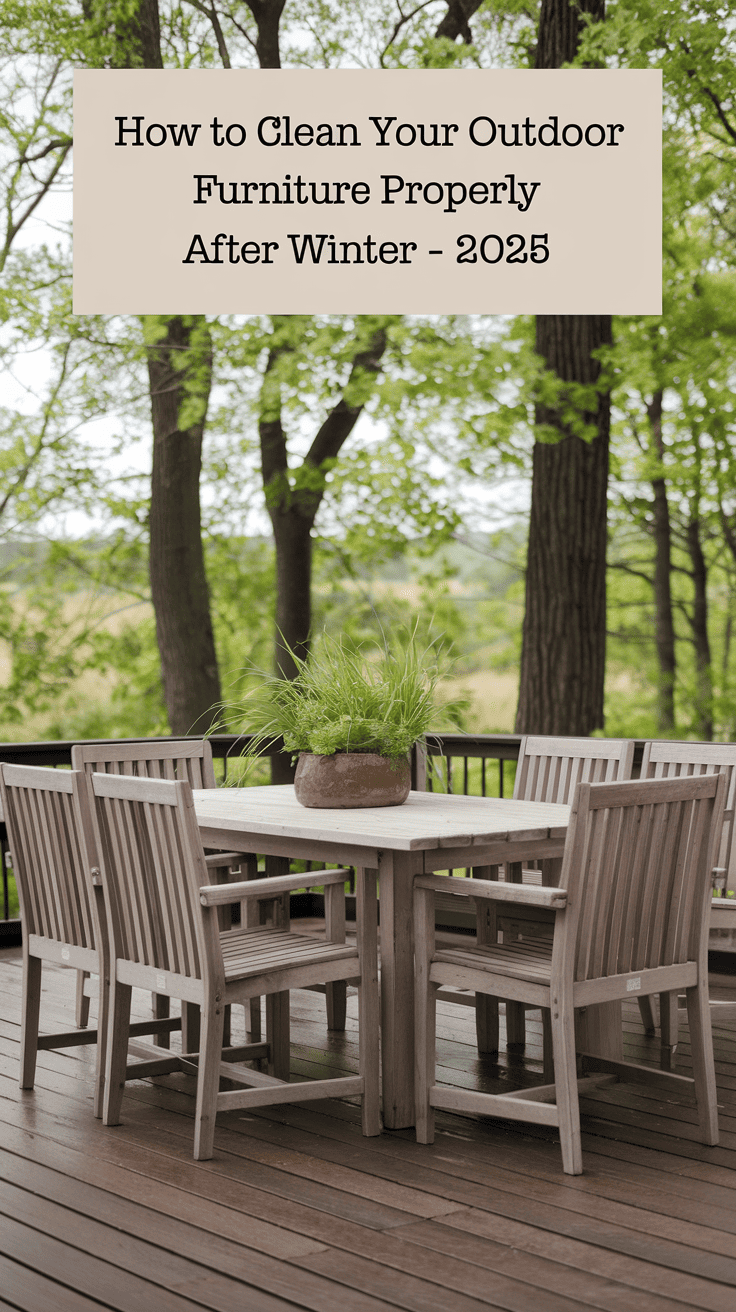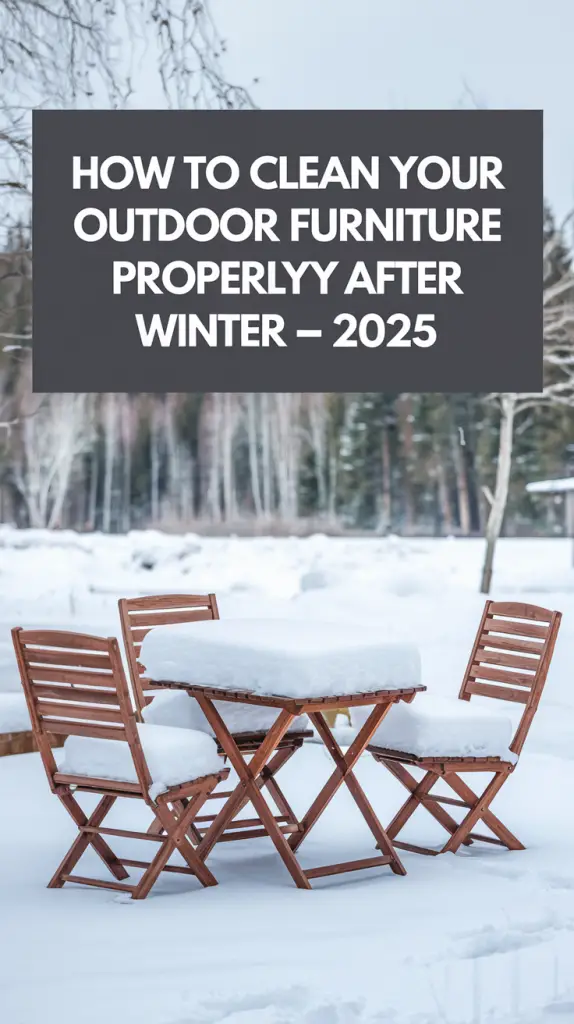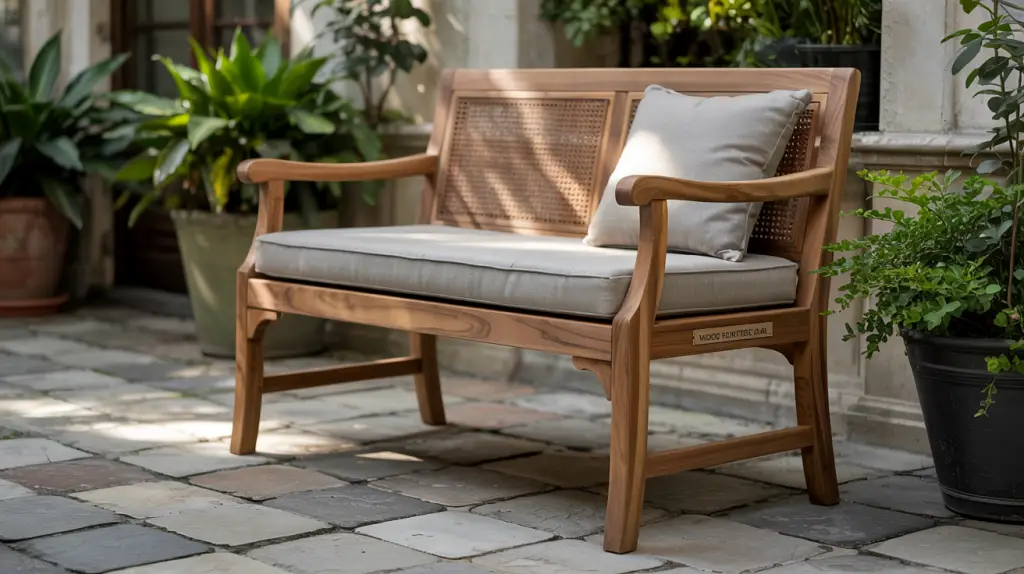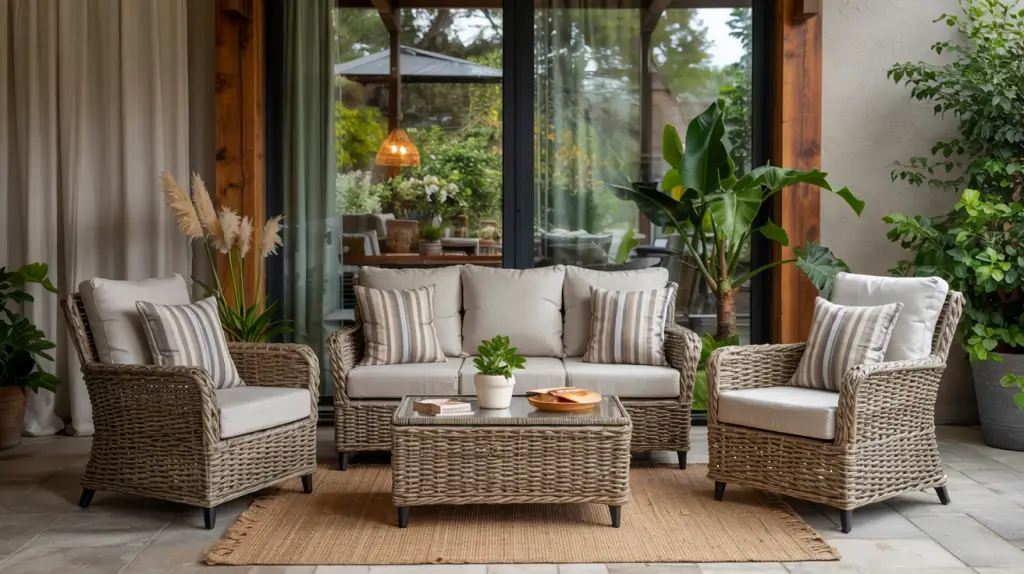How to Clean Your Outdoor Furniture Properly After Winter – 2025 Guide

Has your outdoor furniture gotten a little shabby during those months of snow, rain, and dirt build up? Don’t worry; you’re not the only one. Every spring, American homeowners unearth patio chairs that look like they’ve been through the elements, cushions that have mysteriously changed color, and metal frames that were once chic but now look like they could use some TLC.
Like everything else in life, seasonal cleaning for furniture also requires a special touch. If done right, it can significantly enhance the life of your furniture while also keeping your outdoor space fresh and inviting. You’ll find updated methods in this 2025 guide for cleaning outdoor furniture materials. From plastic chairs to wooden benches, we will demonstrate the most effective cleaning methods along with expert curb recommendations, step-sided care instructions, and restoration tips.
This guide is designed for:
The articles are catered to everyone looking for ways to protect and clean their outdoor furniture post a long brutal winter. Whether you are a homeowner ready to spruce up their backyard for summer, a renter relaxing in the balcony, or a café owner with outdoor seating, we’ve got you covered.

How Post-Winter Cleaning Can Help Protect Outdoor Furniture
Outdoor furniture is bound to endure scratches and dents during winter months due to ever-changing temperatures, snow, rain, and debris, making it crucial to give your furniture a fresh new look come spring. Leaving highly prone cushions unprotected can lead to mold growth while moisture exposure can crack wood. Metal surfaces relying on rusted paint are treated with active corrosive materials will also suffer greatly during this period.
Not completing the spring cleaning literally puts your health at risk and is not only concerning from an aesthetic standpoint. A lack of upkeep can increase the chance of mold or allergens forming, thus posing as a threat to one’s well-being.
It’s essential to use quality materials when caring for outdoor furniture in 2025, because more and more people are investing in quality outdoor spaces. It is no secret that outdoor spaces are becoming just as important as interiors, as was shaped out in a survey organized by Home and Garden in researching how people value their outdoor furniture. Premium textiles and longer lasting materials require proper care to ensure one fully protects their investment.
As Home & Garden pointed out, in their survey conducted in 2024, about 68 percent of homeowners say that their outdoor living space is of equal importance to the living room.
Where and How to Start Clean up in 2025
Understanding what essential items need cleaning and preparation aids in determining when to spring into action, to guarantee an easier process while preventing any form of delays.
What Is the Best Time To Begin Cleaning
The optimal time to begin cleaning outdoor furniture set is between Mid April to Late March, after a frost spell and now that there is clear weather for the items to dry. In the US, set times are closer to April.
In a lukewarm state with no spell changes such as frost, dirt becomes set more deep while moisture damage further worsens. If cleaning is done at a drab period when not everything is completely dry, there is an increased chance of mold.
What You Need to Prepare
Before starting any outdoor furniture cleaning, make sure to check that you have the right materials.
| Material Type | Cleaning Supplies | Tools Needed |
|---|---|---|
| Plastic | Dish soap, baking soda | Sponge, soft brush |
| Wood (teak, cedar) | Wood cleaner, protective oil | Soft-bristle brush, cloth |
| Metal (aluminum) | Mild detergent, rust remover | Gloves, microfiber cloth |
| Wicker/Rattan | Soap solution, soft detergent | Toothbrush, vacuum with brush |
| Fabric Cushions | Fabric cleaner, vinegar solution | Spray bottle, clean towels |
Attempt cleaning off the whole piece once your sure that the small patch is clean and safe to use the cleaning products on.
Step-by-Step: How to Clean Outdoor Furniture by Material
Let’s work through these different techniques of cleaning outdoor furniture.
Plastic Furniture
The easiest material to clean are the plastic surfaces, simply wash the surface using warm water along with a mixture of dish soap or baking soda.
- Eliminate any loose dirt with a dry cloth or brush.
- Mix one tablespoon of dish soap with one gallon of warm water.
- Scrub with a brush or sponge.
- Rinse completely and let it air dry in the shade to avoid discoloration.
Tip: Adding baking soda can efficiently help with stubborn stainsand mildew spots.
Wood Furniture (Teak, Acacia, Cedar)
Furnishings made from wood require more careful cleaning to avoid damage. Where possible, use specially designed wood cleaners.
- Remove particles with a horsehair brush.
- Scoop water-safe soap and scrub it along the grain.
- Lightly rinse it with a hose—not soaking.
- Completely dry and then use Protective Oil.
Did you know? Despite needing seasonal oil application to maintain its deep coloration, Teak remains largely unaffected by weathering.
Metal Furniture (Aluminum, Steel, Iron)
While metals are more durable, they require cleaning frequently to avoid rust.
- Soak in a gentle detergent using warm water.
- Completely rinse and evaporate all water to eliminate water stains.
- Use rust remover on corroded surfaces.
- Apply a layer of protective spray or car wax to finish.
Tip: The use of steel wool is not recommended as it may damage the protective layers.
Wicker or Rattan
These materials can trap dirt within their weave so a good deep clean is crucial.
- To get rid of the dust, use a vacuum with a brush attachment.
- Put soap and warm water into a spray bottle.
- Use a soft brush or toothbrush.
- Clean it using a damp cloth.
The item should be placed in a shady area with a breeze to avoid warping.
Upholstered Cushion and Umbrella
Cushions are frequently the most filthy and allergen-ridden.
- Take off the cushions covers if possible. Wash them in a washing machine, or by hand.
- If the fabric can not be removed, spray it with a mixture of vinegar and water.
- Scrubbing should be done with little pressure. Pat dry the area before air drying.
- Allow the item to dry completely in the sun to eliminate any mildew.
Question for you: Do you bring your cushions inside during winter? If you do not, chances are that you are greatly reducing their lifespan.
What Not To Do When Cleaning Outdoor Furniture
It is very easy to do excessive amounts of cleaning, which will lead to unforeseen problems. Here is a collection of helpful pointers:
- Wood or fabric should not be exposed to abrasive chemicals.
- Wicker or plastic should not be power washed, as this can lead to cracks.
- Leaving furniture exposed to the sun can bleach the surface.
- Soft fabrics can be scrubbed too hard
- All soap has to be rinsed, as residue will attract dirt.
What Not to Do: Quick Reminder
- ❌ Do not perform a spot testers of cleaners.
- ❌ Apply bleach on colored substances.
- ❌ Overlook stain-like structures, or mold.
- ❌ Allow cushions to dry in a moist underground area
By doing these steps, you will ensure that your cleaning does not lead to remorse.
How To Store Outdoor Furniture After Cleaning It
You can maintain your furniture looking like new by properly storing it after cleaning. This method, combined with a few protective steps, will significantly extend your furniture’s life.
Apply Protective Treatments
A clean piece of furniture must be retained in the same condition for as long as possible.
- Wood: Apply oil or sealant for moisture control.
- Metal: Car wax or a rust inhibiting cream will work.
- Plastic: Use UV shield protectant spray or similar.
- Fabric: Apply class water-resilient spray for fabric.
Store Furniture Smartly
You can prolong your furniture’s life by ensuring proper storage.
- Wear breathable coverings to protect from rainfall and UVs.
- Keep furniture suspended in storage sheds.
- Arrange plastic chairs vertically for better space utilization.
- Strap down folded or rolled umbrellas.
5 Essential Tips for Protecting Furniture Safely
- Heat-dry damp furniture before storing.
- Cover furniture with appropriate furniture covers, not plastic tarps.
- Use pallets for ground contact, if necessary.
- Store cushions indoors in the off-season.
- Schedule a light cleaning once a month to keep things manageable.
What’s new in caring for outdoor furniture in 2025?
Friends, the outdoor furniture industry is advancing. Check out these new features:
- Cleaners: Greater availability of plant-based and eco-friendly cleaning supplies.
- Premium furniture coatings: Some higher-end furniture actually repels dirt and moisture.
- Advanced covers: The newest models have UV detection and ventilation membranes.
Industry focuses on durability, so plan on adjusting your cleaning schedule!
As of 2025, the outdoor living market is projected to reach a whopping $20.5 billion within the U.S.

Conclusion: Maintain the Appearance of Outdoor Furniture Without Compromising Quality
Clean-up recaps the most important points:
- The optimal time to commence cleaning is at the start of the season.
- Appropriate tools and materials for the specific brand need to be used during the cleanse.
- Don’t make common mistakes, such as scrubbing too harshly or incomplete drying.
- To prolong longevity, items should be stored and protected properly.
- Follow the trends in furniture care for the year 2025.
Now it’s your turn: What kind of outdoor furniture do you have? Tell us about your cleaning successes (or fails!) in the comments below. If you have useful tips, please share because we may include them in our next guide!






